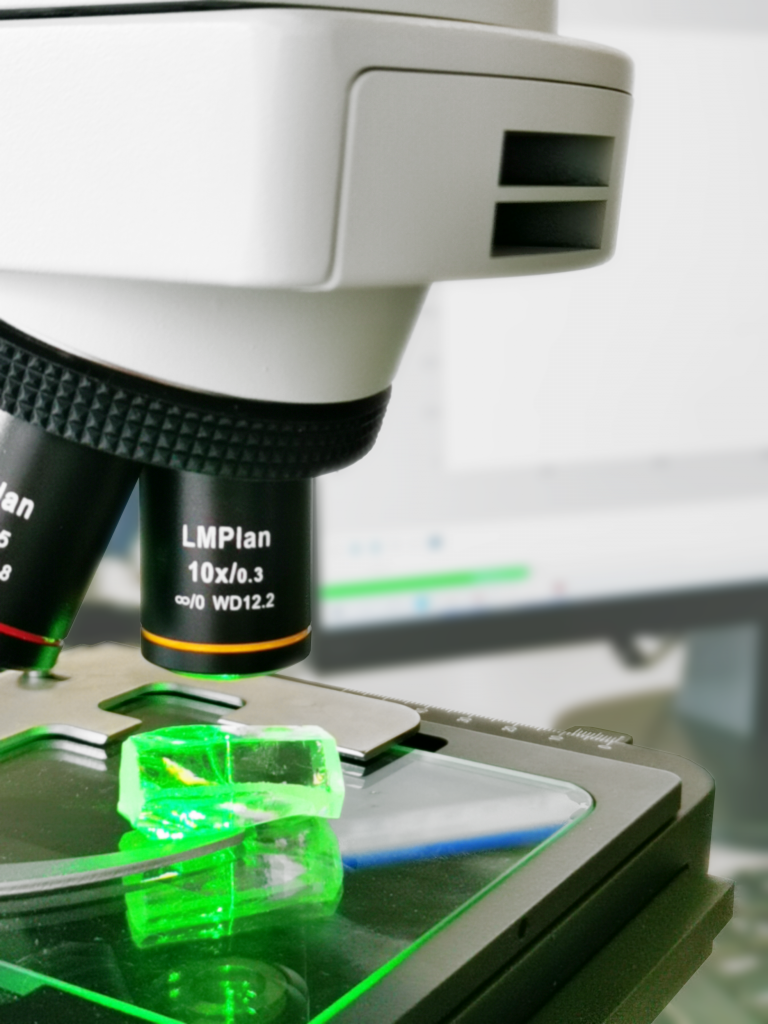Non-destructive research methods are used in the evaluation of jewelry stones, minerals and precious metals.A visual inspection and examination is performed using gemological equipment.The conclusion is given on the basis of morphological features, physical and optical properties of the examined object of expertise. Identification of minerals and their synthetic analogues is carried out using gemological equipment.Our laboratory is equipped with the most modern gemological equipment, which allows us to carry out diagnostics at a high level.

We use:
- Electronic and optical refractometers. These devices help to accurately determine the refractive indices of minerals and their imitations (including moissanites and diamonds) for subsequent identification.
- A polariscope with a conoscope is used to study the optical properties of transparent stones, the presence of birefringence and the sign of the optical axes.
- The Presidium jewelry meters, GRIFF calipers and Poldi measuring magnifiers allow you to determine the dimensions of jewelry and inserts with maximum accuracy.
- Ultraviolet Light lamp (LW/SW) allows you to evaluate the fluorescence of the mineral, which provides additional diagnostic features in the diagnosis of natural/synthetic diamonds and other minerals.
- Certified ViBRA scales make it possible to determine the weight of jewelry and inserts with an accuracy of 0.01 carats.
- The Chelsea filterallows you to distinguish between natural emerald and natural green beryl, and also helps in identifying most stones of green and blue colors.
- The dichroscope allows you to observe the effect of pleochroism in minerals.
- The Presidium Gemstone Tester helps to measure the thermal conductivity of a sample, which allows you to identify diamonds and the most common colored stones fairly accurately.
- The ALROSA DIAMOND INSPECTOR diamond tester uses 3 optical methods to analyze colorless and near-colorless diamonds. It is used to diagnose natural and synthetic diamonds, as well as their imitations from 0.03 to 10 ct with the possibility of checking in small jewelry.
- The D-SECURE diamond tester allows you to quickly identify synthetic "chalk" diamonds in bulk or fixed in a flat product.
- The diamond indicator "Clio-Diamond" allows you to quickly distinguish a diamond from synthetic moissanite and diamond imitations based on a double test of thermal and electrical conductivity.
- The Presidium Sintetic Diamond Screener allows you to quickly identify Type IIa diamonds, most of which are synthetic diamonds.
- The EDS-5000 X-ray spectrometerallows you to quickly and accurately determine the sample of the jewelry alloy of the product, without damaging the jewelry.
- Diamond color standards "The Master Stones graded by "Antwerp Diamond Laboratory" are used to determine and assign the color group of a diamond under special lighting.
- Cold white light lamps are used in gemology to create reference lighting to determine the color characteristics of jewelry inserts.
- The catalog of color standards of colored stones "World of Color" allows you to define and assign color groups of colored stones.
